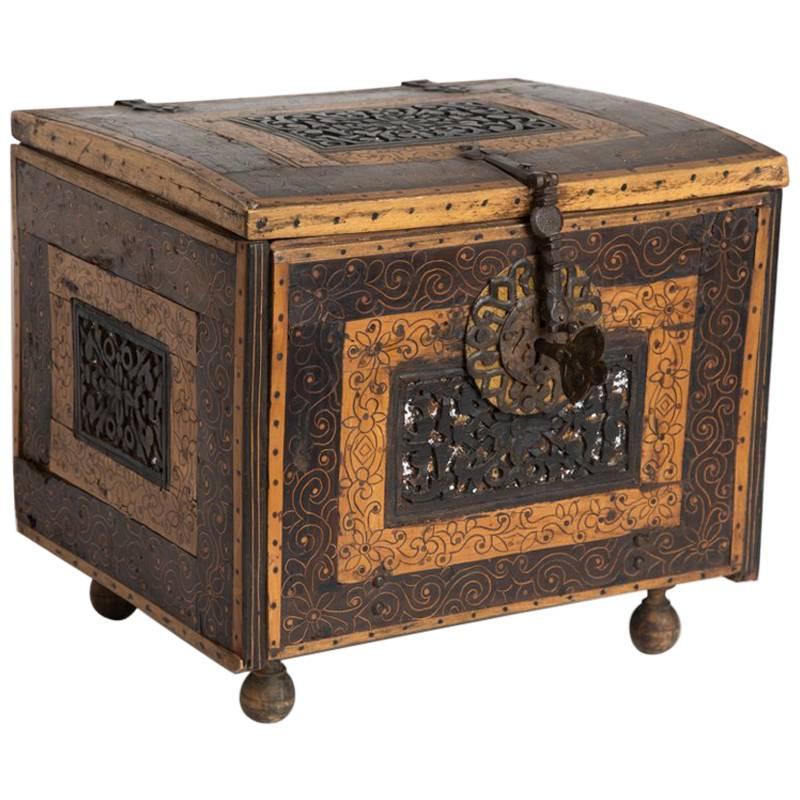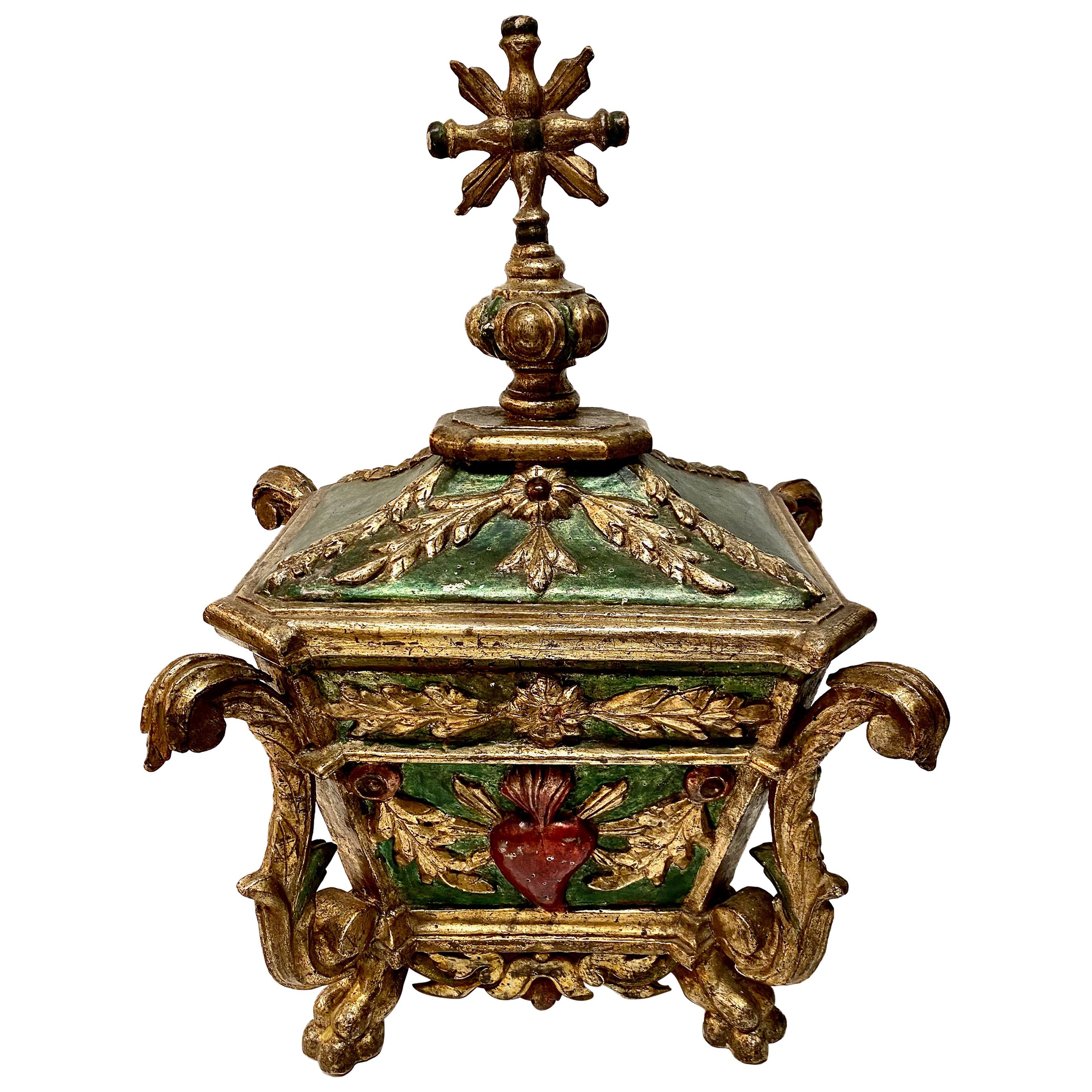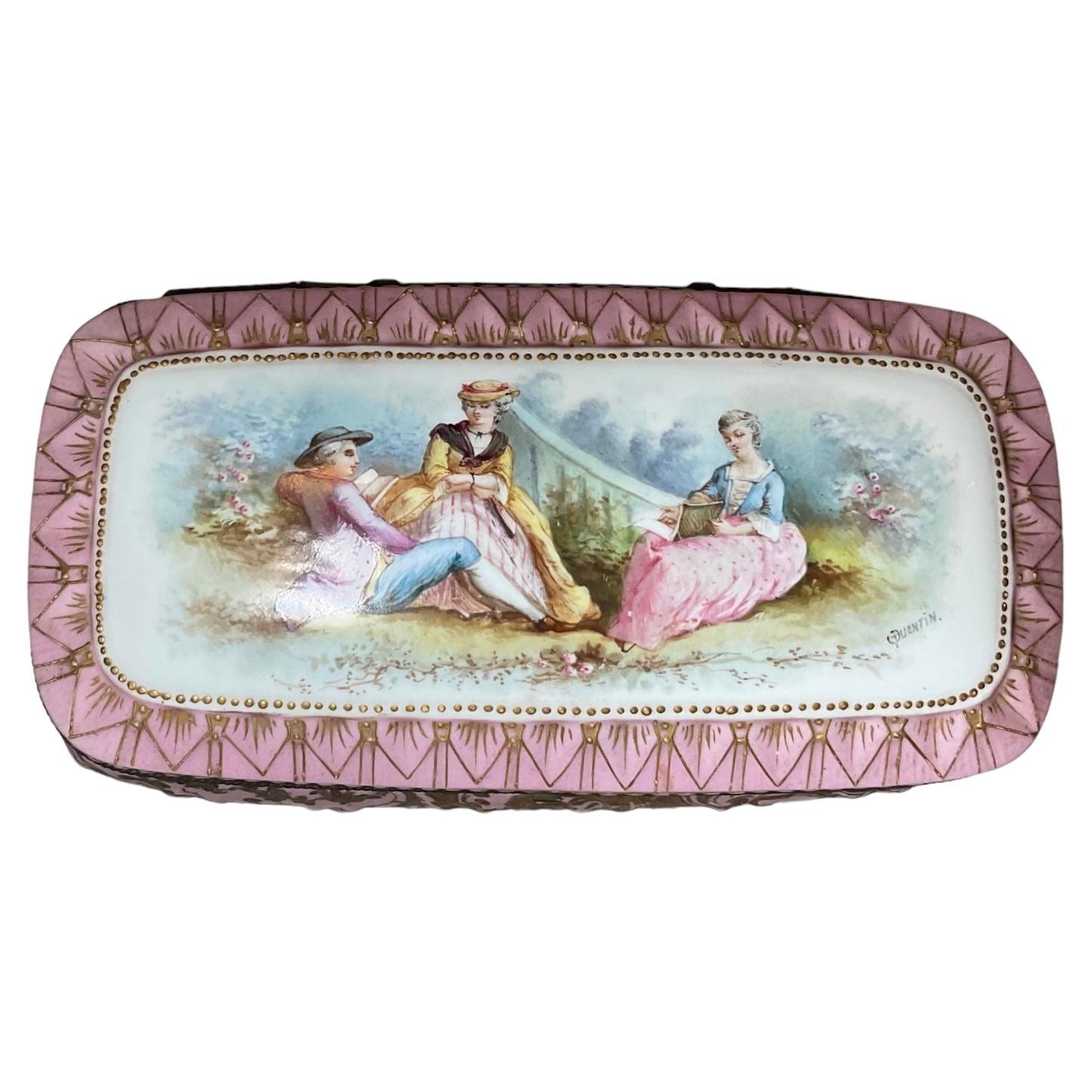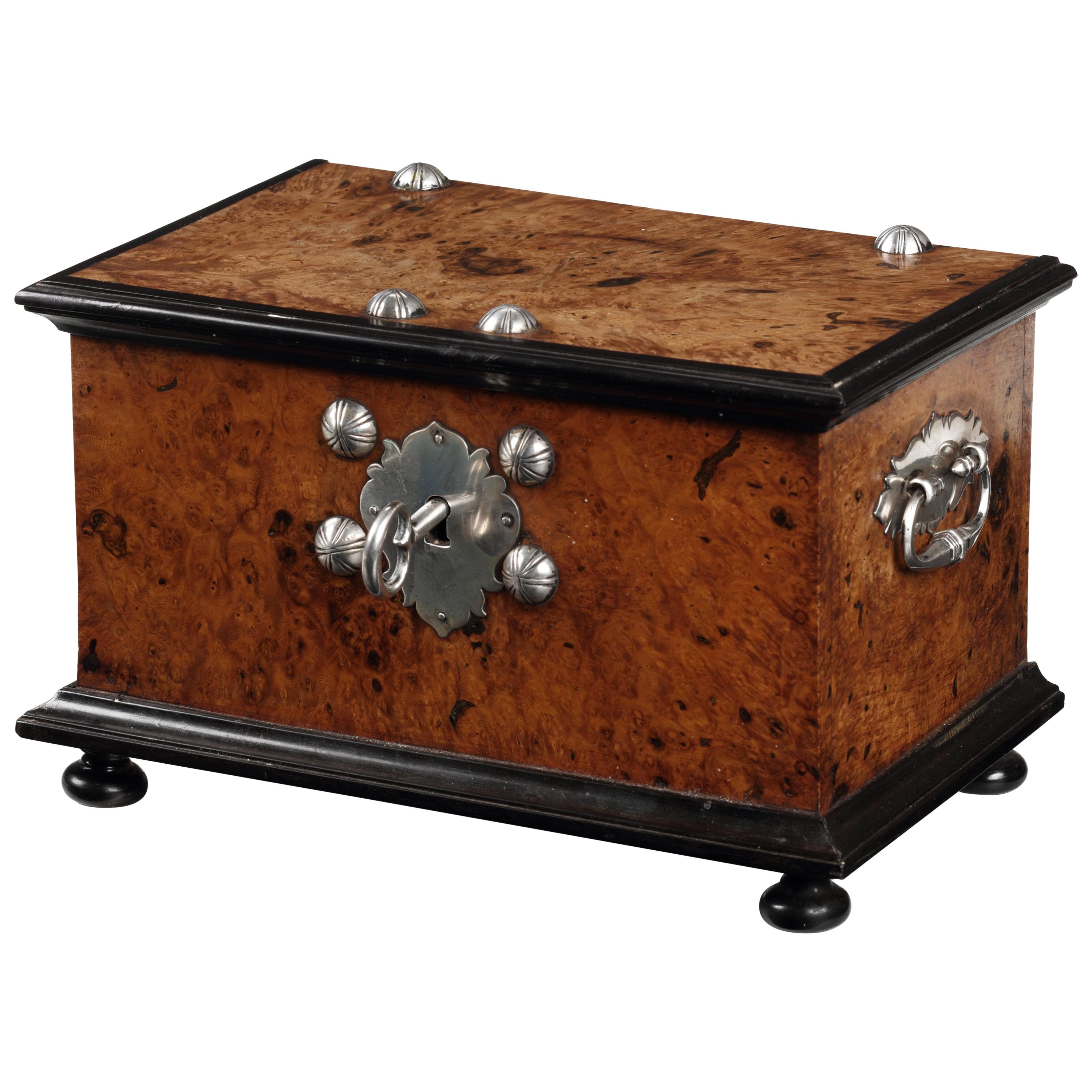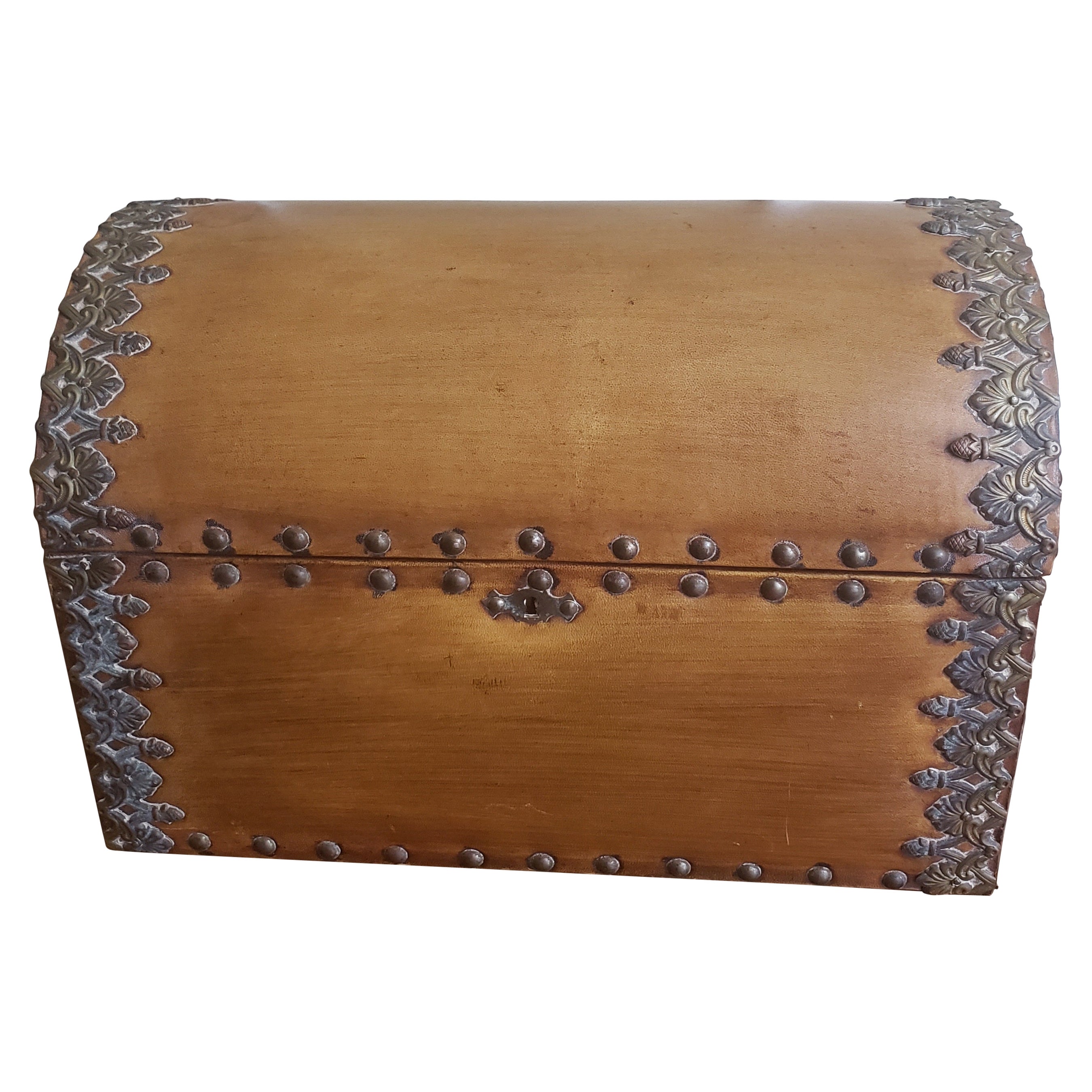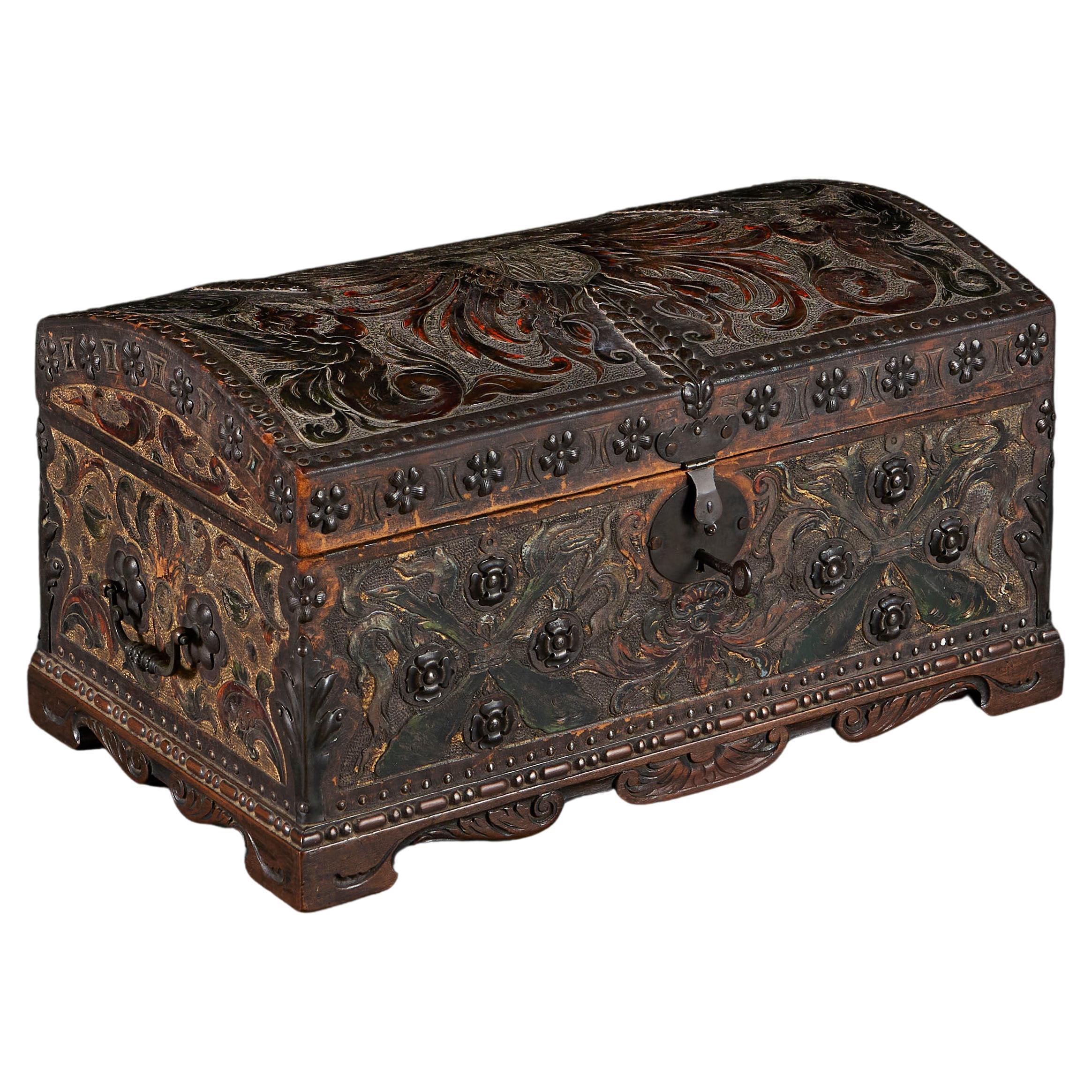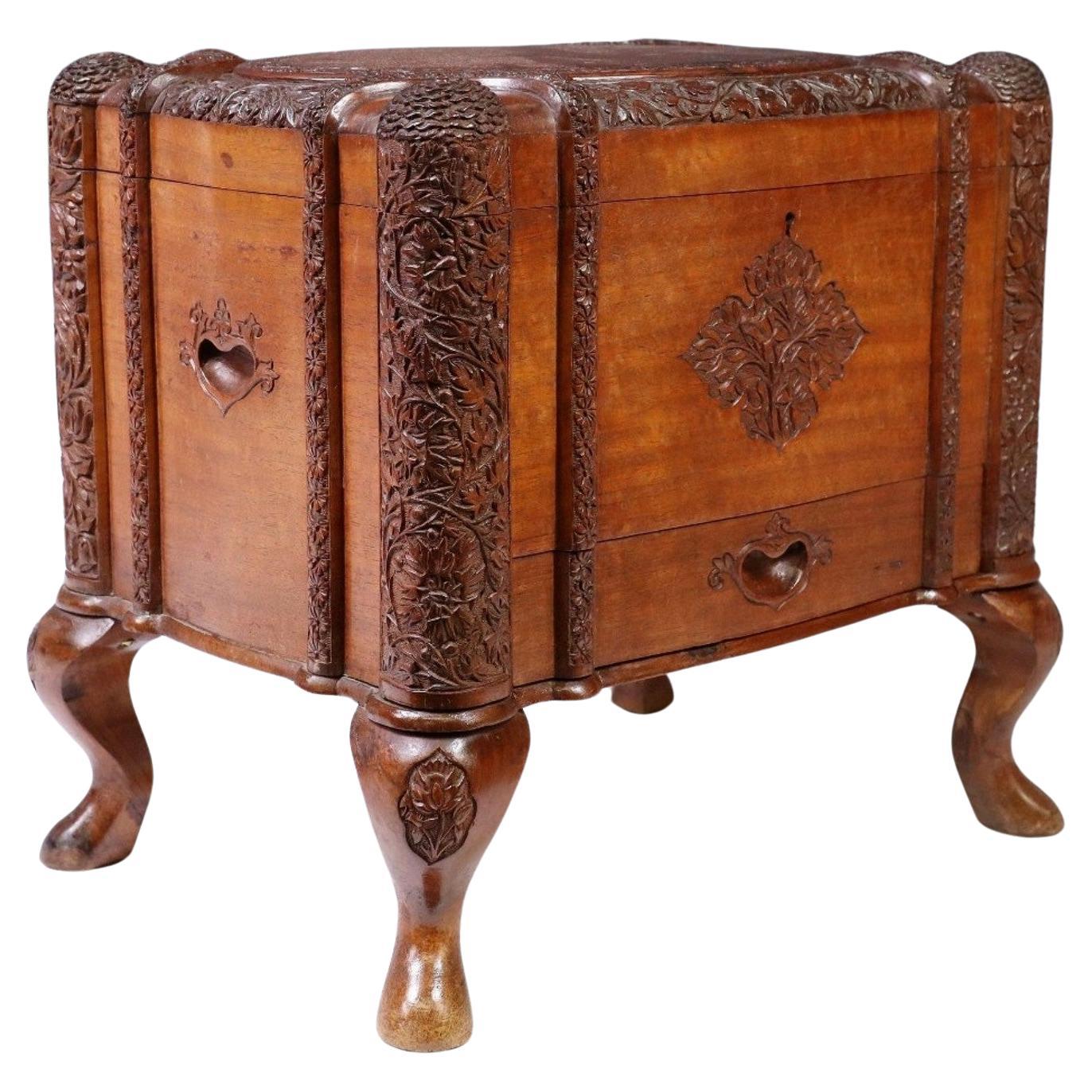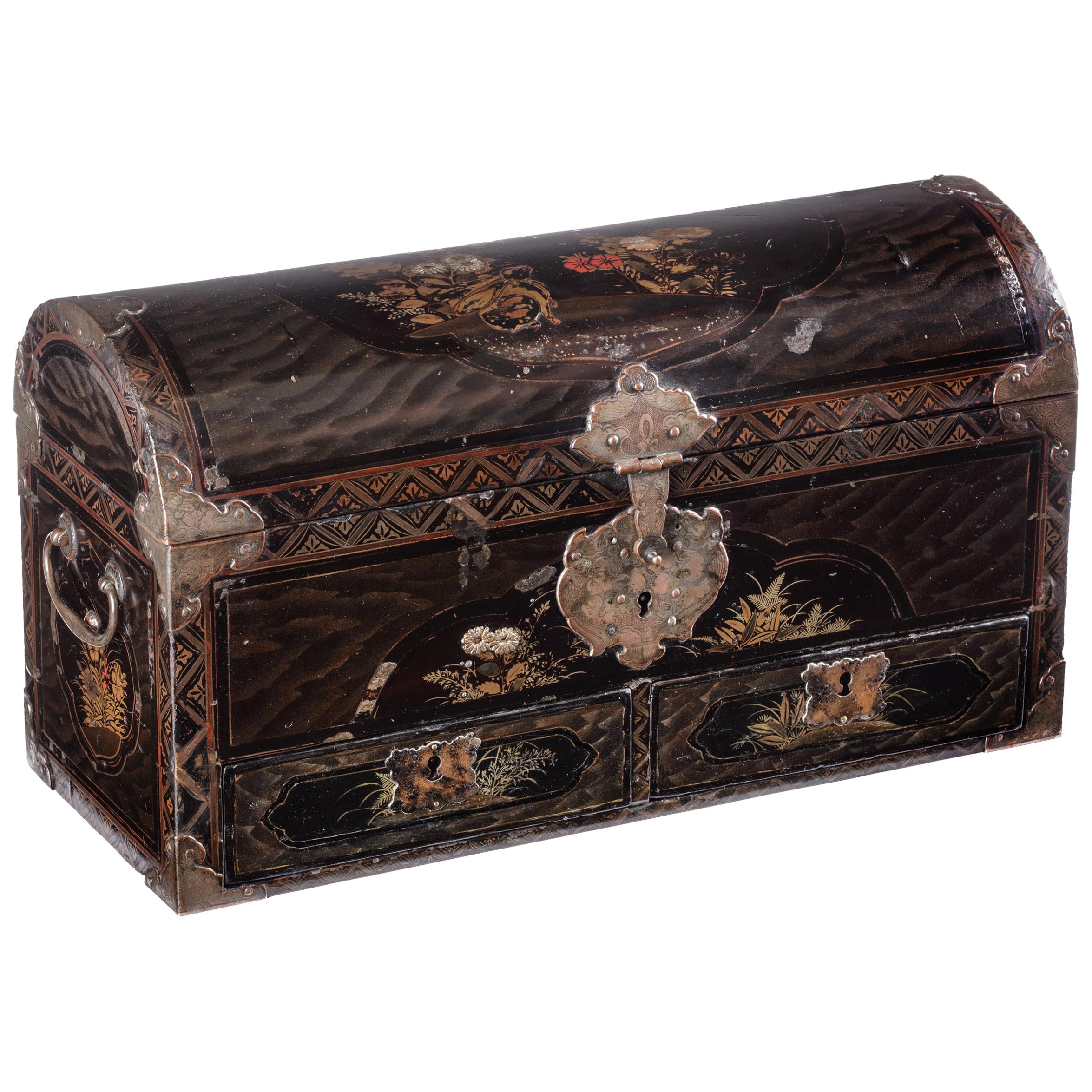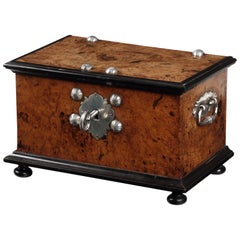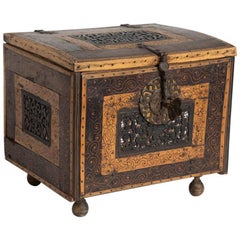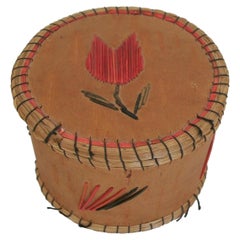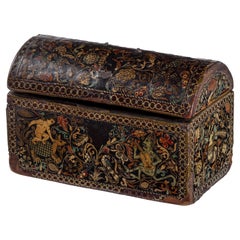
Spanish Colonial Barniz De Pasto Lacquer Casket, Colombia, 1625-1650
View Similar Items
Want more images or videos?
Request additional images or videos from the seller
1 of 8
Spanish Colonial Barniz De Pasto Lacquer Casket, Colombia, 1625-1650
About the Item
- Dimensions:Height: 3.31 in (8.4 cm)Width: 5.24 in (13.3 cm)Depth: 2.72 in (6.9 cm)
- Style:Spanish Colonial (Of the Period)
- Materials and Techniques:
- Place of Origin:
- Period:Mid-17th Century
- Date of Manufacture:1625-1650
- Condition:Wear consistent with age and use. Minor losses. In original condition, part of the silver mounts missing, damages overall. Relic of time.
- Seller Location:Amsterdam, NL
- Reference Number:1stDibs: LU5458226431172
About the Seller
5.0
Vetted Seller
These experienced sellers undergo a comprehensive evaluation by our team of in-house experts.
Established in 1985
1stDibs seller since 2020
19 sales on 1stDibs
Typical response time: 3 hours
More From This SellerView All
- Fine Dutch Colonial Indonesian Casket with Silver Mounts, circa 1706Located in Amsterdam, NLA fine Indonesian Ambonya burl, ebony and teak casket with silver mounts Jakarta (Batavia), circa 1706 (year letter W (1705-1710), marked DV, probably Dirck Vooght The outer ri...Category
Antique Early 18th Century Indonesian Dutch Colonial Decorative Boxes
MaterialsSterling Silver
- 16th-Century Indo-Portuguese Colonial Mother-of-pearl Gujarat CasketLocated in Amsterdam, NLAn exceptional Indo-Portuguese colonial mother-of-pearl veneered casket with silver mounts India, Gujarat, 2nd half of the 16th century, the silver mounts Goa or probably Lisbon Measures: H. 16 x W. 24.6 x D. 16.1 cm An exceptional Gujarati casket with a rectangular box and truncated pyramidal lid (with slopes on each side and a flat top) made from exotic wood, probably teak (Tectona grandis), covered with a mother-of-pearl mosaic. The tesserae, cut from the shell of the green turban sea snail (Turbo marmoratus, a marine gastropod) in the shape of fish scales, are pinned to the wooden structure with silver ball-headed nails. The casket is set on bracket feet on the corners. The masterfully engraved decoration of the silver mounts follows the most refined and erudite Mannerist repertoire of rinceaux and ferroneries dating from the mid-16th century. The high quality and refinement of the silver mounts and, likewise, the silver nails that replaced the original brass pins used to hold the mother-of-pearl tesserae in place indicate the work of a silversmith probably working in Lisbon in the second half of the 16th century. The Indian origin of this production, namely from Cambay (Khambhat) and Surat in the present state of Gujarat in north India, is, as for the last three decades, consensual and fully demonstrated, not only by documentary and literary evidence - such as descriptions, travelogues and contemporary archival documentation - but also by the survival in situ of 16th-century wooden structures covered in mother-of-pearl tesserae. A fine example is a canopy decorating the tomb (dargah) of the Sufi saint, Sheik Salim Chisti (1478-1572) in Fatehpur Sikri in Agra district in the state of Uttar Pradesh, north India. This is an artistic production, geometric in character and Islamic in nature, where usually the mother-of-pearl tesserae form complex designs of fish scales or, similar to the dishes also made using the same technique, with the thin brass sheets and pins, stylized lotus flowers. The truncated pyramidal shape corresponds, like their contemporary tortoiseshell counterparts also made in Gujarat, to a piece of furniture used in the Indian subcontinent within the Islamic world prior to the arrival of the first Portuguese. This shape, in fact, is very old and peculiar to East-Asian caskets, chests or boxes used to contain and protect Buddhist texts, the sutras. A similar chest is the famous and large reliquary chest from Lisbon cathedral that once contained the relics of the city's patron saint, Saint Vincent. Both match in shape, having the same kind of socle or pedestal and bracket feet, and in their engraved silver mountings, featuring the same type of refined, erudite decoration. Their differences lie in the silver borders that frame the entire length of the edges of the chest (both the box and the lid), pinned with silver nails, and on the lock plate, shaped like a coat of arms in the Lisbon example. Given the exceptional dimensions of the reliquary casket...Category
Antique 16th Century Indian Jewelry Boxes
MaterialsSilver
- Fine Japanese Namban Lacquer Jewelry Casket, 17th CenturyLocated in Amsterdam, NLJapanese Namban lacquer transition-style coffer with two drawers Kyoto/Nagasaki, circa 1650 The cartouches with gilt and red decorations of leaves...Category
Antique 17th Century Japanese Edo Lacquer
MaterialsCypress
- 18th-century Dutch-colonial Peranakan mother-of-pearl casket with silver mountsLocated in Amsterdam, NLAn Indonesian Peranakan mother-of-pearl inlaid mastic sirih casket with silver mounts Jakarta (Batavia), circa 1720-1730, the silver hinges marked for Batavia, maker’s mark HS or SH...Category
Antique Mid-18th Century Indonesian Dutch Colonial Antiquities
MaterialsSilver
- Japanese Colonial Nagsaki Lacquer Box with Depiction of Amsterdam, 1830-1840Located in Amsterdam, NLAn important Japanese lacquer box with a view of The 'Nieuwe Stadsherberg Van Amsterdam Nagasaki, Edo-period, 1830-1840 The black lacquered wood box, decorated in gold and inla...Category
Antique Early 19th Century Japanese Decorative Boxes
MaterialsMother-of-Pearl, Wood
$27,345 / itemFree Shipping - Superb Late 16th Century Signed Colonial Japanese Namban Export Lacquer CofferLocated in Amsterdam, NLSuperb late 16th century signed colonial Japanese Namban export lacquer coffer Momoyama period, late 16th/early 17th century, inscribed 'Arisato' on the bottom H. 30.5 x W. 43...Category
Antique 16th Century Japanese Lacquer
MaterialsCedar, Lacquer
You May Also Like
- 18th Century Spanish Colonial EscritorioLocated in Scottsdale, AZMagnificent 18th century Bolivian locking escritorio with inlaid wood and hand-forged iron details.Category
Antique Early 18th Century Bolivian Spanish Colonial Decorative Boxes
MaterialsIron
- Native American Parfleche Box, Sioux, 19th Century Painted Hide PlainsBy Sioux Indian ArtLocated in Denver, COAntique Sioux (Native American/Plains Indian) Parfleche in a box form constructed of rawhide and intricately painted in an abstract design with hourglass and geometric motifs with natural pigments and red trade cloth. At the time this was created, the Sioux Indians were nomadic and are associated with vast areas of the Great Plains of the United States including present-day North and South Dakota, Minnesota, Nebraska and Montana. Authenticity is guaranteed. Box is in very good condition - please contact us for a detailed condition report. Parfleches are rawhide containers which were fundamental to the Plains way of life. Functioning essentially as protective travelling suitcases, they enabled the nomadic tribes to effectively pursue buffalo herds and migrate between seasonal camps. So critical were they to a nomadic existence that over 40 tribes are known to have historically produced parfleches. Collectively, these tribes inhabited an area which encompassed the entirety of the Plains, as well as the parts of the Southwest, the Transmontane and Western Plateau regions. Parfleches were, out of necessity, robust and versatile objects. They were designed to carry and protect within them anything from medicinal bundles to seasonal clothing or food. In fact, it was because of the containers’ robusticity and variety that parfleches earned their name in the Anglo world. Derived from parer (to parry or turn aside) and fleche (arrow), the word parfleche was coined by 17th century French Canadian voyageurs and used to describe indigenous objects made from rawhide. Despite their common utilitarian function, parfleches served as one of the major mediums through which Plains Indian tribes could develop their long-standing tradition of painting. In fact, it is in large part due to the parfleche that tribal style emerged. Even though parfleche painting developed simultaneously with beading and weaving, painting as an artistic tradition held particular importance in tribal culture. Believed to have evolved from tattooing, it had always been used as a conduit through which tribal and individual identity could be expressed. As such, many tribeswomen were deeply committed, some even religiously, to decorating their parfleche either with incised or painted motifs that were significant to them and/or the tribe. For some tribes, such as the Cheyenne, the decorative processes which surrounded parfleche production were sacred. For others, it seems that their parfleche designs shared an interesting artistic dialogue with their beadwork, indicating a more casual exchange of design motifs. This particular relationship can be seen in Crow parfleche...Category
Antique Late 19th Century American Native American Native American Objects
MaterialsHide
- Chippewa Birch Bark, Quills & Sweetgrass Box with Tulip - Canada - Early 20th C.By Native American ArtLocated in Chatham, ONVintage Chippewa (also known as Ojibwe) birch bark lidded box with porcupine quill decoration and sweetgrass rims fastened with black thread - featuri...Category
Early 20th Century Canadian Folk Art Decorative Boxes
MaterialsSoftwood
- Spanish Colonial Gilt Wood Reliquary or Table BoxLocated in Pasadena, CAThis is an outstanding example of a late 18th/early 19th century Spanish Colonial Reliquary or table box. The emerald green combined with th...Category
Antique Late 18th Century Mexican Spanish Colonial Decorative Boxes
MaterialsGold Leaf
- Chateau De Tuileries Porcelain Rectangular CasketBy Chateau des TuileriesLocated in Guaynabo, PRThis is a Chateau de Tuileries hand painted porcelain rectangular casket box. It depicts a pastoral scene of a young couple and their chaperone over it’s hinged lid. The scene is fra...Category
Antique 19th Century French Rococo Decorative Boxes
MaterialsPorcelain
- 20th Century Spanish Colonial Style Ornate Leather & Nail Heads Document ChestLocated in Germantown, MD20th Century Spanish colonial style top grain Leather mount, brass ornate and nail head trims with dome top document chest. Newer Interior red felt liner. Metal drop down handles w...Category
Late 20th Century Spanish Spanish Colonial Decorative Boxes
MaterialsMetal
Recently Viewed
View AllMore Ways To Browse
Folk Art Rabbit
Mexico Folk Art Figure
Mexican Folk Art Figure
Southwest Folk Art
Spanish Galleon
17th Century Spanish Silver
Jesus Christ On Cross
Lion Teeth
Flowers To Jesus
17th Century American Colonial
Antonio Asia
Boy Riding
Pressed Leaf Art
Silver Heart Lock
Resin Lion
Mexican Colonial Silver
Mexican Monkey
Mexico Monkey
